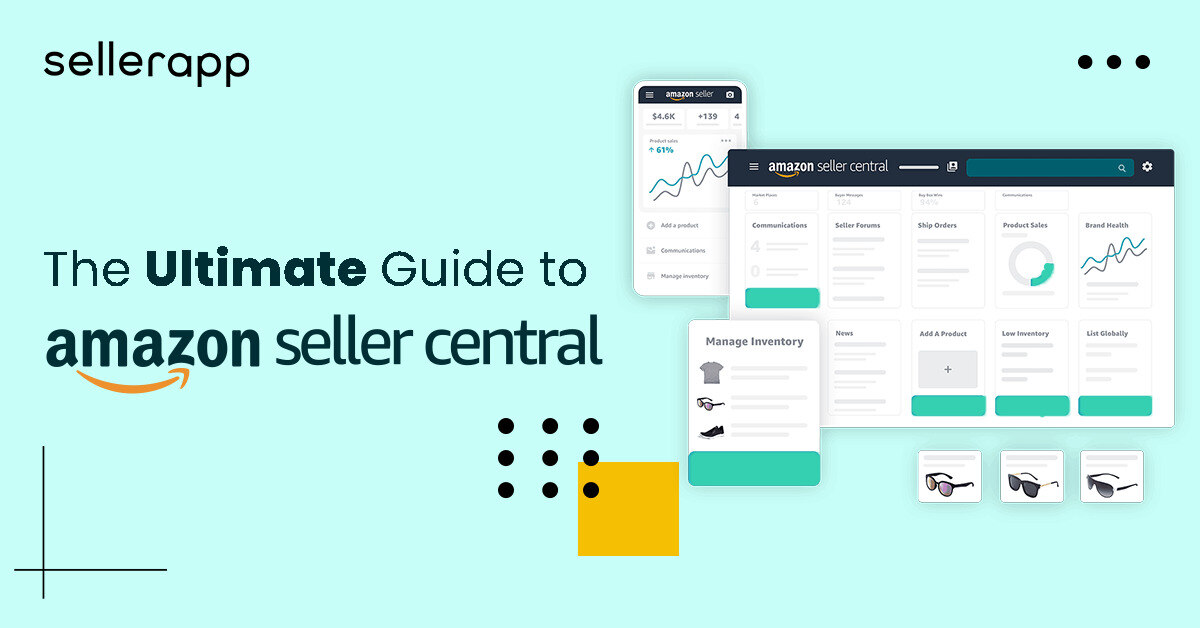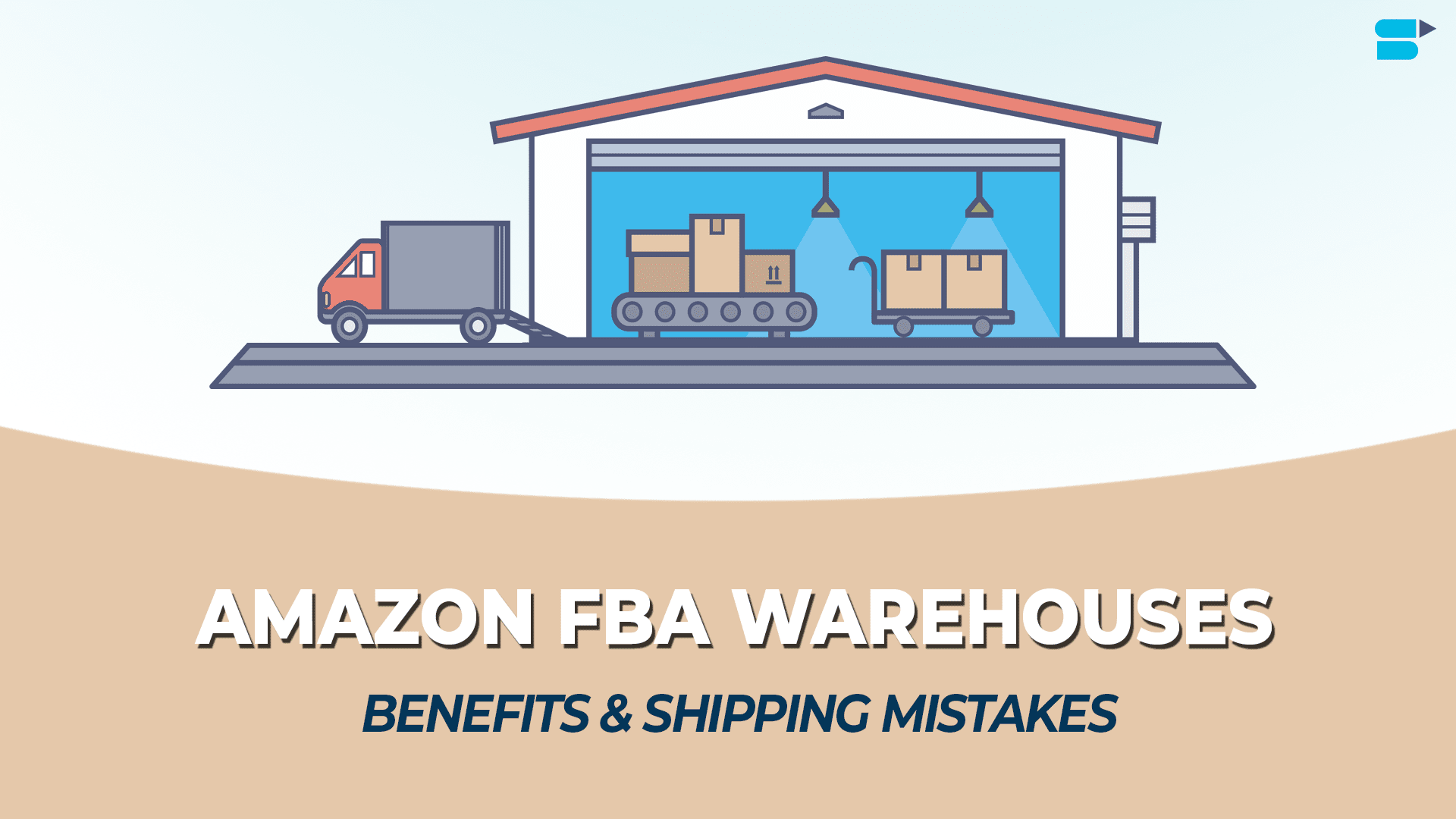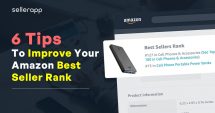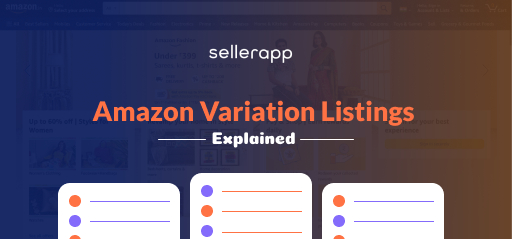Ultimate Guide to A/B Testing your Amazon Listings
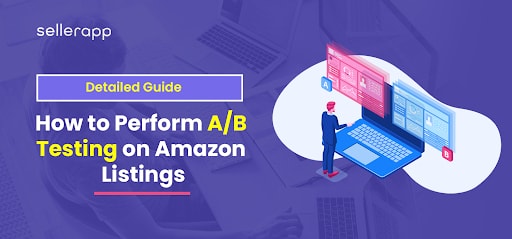
If you are an Amazon seller, you’ll know there’s no one-size-fits-all solution for your business. Your competitor might be selling the same items as yours, but their pricing strategy, images, or A+ content might lead them to bag all profits, as well as grab your traffic.
Crafting a solid listing strategy that persuades shoppers to buy your product requires a lot of analysis and research, and is never a one-time task. That’s why it is crucial to run split tests on various elements of your listing, and identify which versions perform the best.
In this article, you are expected to learn about:
- What are Amazon A/B Testing and Split Testing?
- Why run Split Tests on Amazon listings?
- How to split test your Amazon Listing?
- What elements can you run Split Tests on?
- FAQs
Once you give it a thorough read, you’ll understand the power of Amazon A/B Testing and why it’s called the secret sauce of Amazon sellers.
What are A/B Testing and Split Testing?
Split testing, or AB testing, on Amazon is a great way of optimizing your listings through experiments with product content, images, and pricing. There are four crux elements of the listing that affect conversion rate: Image, Title, Product Features and Description, and Price.
If there is one mantra that all marketers abide by, it is “Test everything.” When you have the resources to analyze and monitor everything, why craft your listings out of intuition and mere oast performance? You never know, even a basic change like tweaking your listing title can change the game and get you 10x more organic traffic!
Wondering how? You can get your desired results by running Amazon split tests, or A/B Tests: a process of running randomized and controlled tests between two or more variations of a listing, for a specific period of time, monitoring specific metrics like impressions, clicks, conversion rate, and most importantly, sales.
Note: You cannot test different versions simultaneously, because then it will be impossible to identify which particular variation fetched you the optimum results.
Why run A/B Tests on Amazon Listings?
Identifying which element of your listing is a game-changer and has the potential to drive thousands of customers to your product page is one of the major driving factors of A/B software testing solutions.
You might be having a decent conversion rate currently, but there is always room for improvement. You can’t know for sure if your listings have the potential to drive even more sales than now. It could be that your listing SEO is not that great and whatever you are spending on your ads is only burning a hole in your pockets. This is why Amazon A/B Testing is of utmost importance.
How to split test your Amazon Listing?
It is a process of data-driven listing optimization that most sellers on Amazon leverage. But how can you do that?
- Take one of your product pages and record its number of views and conversion rates.
- Tweak your listing in a way and wait for some time before collecting a new set of data.
- Compare the results with the initial numbers, and analyze if the recent modification has caused any improvement, in terms of views and sales.
- Rinse and repeat.
Let’s say if your product title is turning people off to your listing and causing you to lose traffic, you’d want to validate the accuracy of this information, right? Let’s use this situation for a split test example.
Split testing your Amazon Product Title
To run an A/B Test over different Amazon product titles, you need to experiment and compare at least two versions to learn which one brings about more sales.
Let’s say you are selling women’s t-shirts. To test which product title is the best fit for you, craft two eye-catching titles for your listing.
Version 1 – Cotton Half Sleeve Oversized Cow & Zebra Printed T-Shirt for Women
Version 2 – Women’s Oversized Printed T-Shirt
In order to test which version is the best, you need to run the title Version 1 for two weeks, and Version 2 for the next two weeks. At the end of the four weeks, monitor the data and figure out which product title made a prominent difference in conversions and sales. The list of data that you should be tracking from your Seller Central account is:
- Number of Orders
- Search Volume
- Clicks
Whichever product title performed the best has gotten you the highest amount of traffic and conversions is the more effective out of the two, and clearly what your new title should be!
You can try this same strategy over different elements like images, price, product description, and so on.
The key to a successful Amazon business is to keep conducting A/B Tests, and you’ll begin to understand what shoppers searching for your product are most attracted to.
A/B testing completely adheres to Amazon’s rules and regulations, just remember to follow its official Style Guide.
How to track your listing metrics?
To identify any significant changes within your metrics, you have to analyze Amazon’s business reports within your Seller Central account.
In Seller Central, navigate to Reports > Business Reports.
Now, click on “Detail Page Sales and Traffic By Child Item.”
In this report, you can view each product you are selling and its various KPIs such as Sessions, Buy Box Percentage, Units Ordered, Unit Session Percentage (conversion rate), and Product Sales. You can also select the date range manually if you want to view the data of a particular week/month.
This is a great report to track your product performance periodically.
When running an A/B test, you should let each listing version for at least two weeks. This will ensure you have enough data to decide on a particular variation. If your listing has fewer sales, you should test for more than two weeks to gather more data.
Record the start and end dates of each variation you’re testing so you know when to look at your business reports.
Don’t forget to check your sessions, conversion rates, and units ordered before and after each A/B Test, and record them on your spreadsheet to monitor your performance timely.
At the end of your A/B test, tally the data to find out which version performed the best!
How to Skyrocket your e-commerce conversion rates read here.
Manage Your Experiments Tool
As mentioned above, Amazon has a new feature called Manage Your Experiments available for sellers who are enrolled in Amazon Brand Registry. The tool enables brands to simultaneously compare two versions of content against each other to identify the best version.
If you are a brand-registered seller, I highly recommend you use this amazing tool!
Unlike manual A/B tests, in the Manage your Experiments tool, both versions will be running at the same time and Amazon will automatically split shoppers who view your listing into two groups.
During the test, one group will view Version A, and the other will view Version B.
If you are enrolled in Brand Registry, hover over the Brands tab, and click on Manage your Experiments.
Now, simply test different versions of your listings by modifying A+ Content, title, pricing, and images.
Click on “Create a New Experiment” to get started and choose which elements you wish to tweak such as A+ Content, Title, or Main Image.
After choosing the experiment type, select your listing, enter the product information you want to test, and add the test duration. You can select from 4 to 10 weeks — this range allows Amazon to collect as much data as possible.
Once complete, click on “Schedule Experiment.” The best part is that you can check the results of the split test every week until the experiment ends.
What elements of your Amazon listings can you run A/B Tests on?
You can improvise your product pages by modifying and split testing the imagery, wording, and pricing.
Images
Your product images are one of the most important elements that can make or break your selling tactics on Amazon.
As the shopper cannot see or feel the item in person, it’s the pictures that they need to rely on to make a purchase decision. Poor images often result in lesser clicks and even fewer conversions, however, they’re not the only elements of a listing that drive conversions.
To know more about the best practices on Product Images, read our in-depth guide here.
Once, you have run Split Tests on your images and identified the best version, start running tests on other aspects of your listing such as the title, price, features, and description to fully optimize your listing.
Title
The title is what shoppers will view right after the main image, within Amazon SERPs. Therefore, you need to be really creative with your titles and show customers exactly what your product is and its important aspects like texture and functionality.
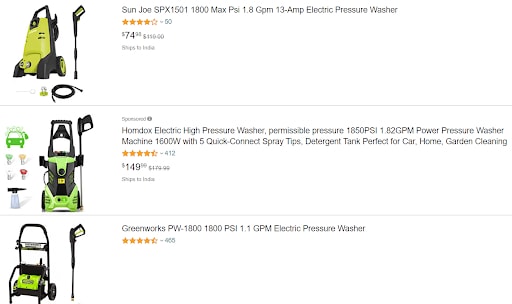
Which item in this image above looks the most appealing to you? For me, it would be the second item, as it includes almost every feature in the title, like flow rate, utility, and watt. If you don’t include all this information immediately, a customer may not even click on your product even when your product is of the most premium quality.
Experiment with multiple versions of your product title to see if it makes a difference in click-through rate or your overall sales. Just remember to always follow Amazon’s listing guidelines.
If you are looking for a complete guide on Amazon listing optimization, read this blog here.
Price
The price of your Amazon product is one of the most crucial factors that influence customers’ purchase decisions. If your item is priced too high, shoppers may opt for the cheaper option. If it is priced too low, shoppers will assume your product is of cheap or low quality, and you may lose out on potential sales.
Knowing how to price your Amazon product is not as difficult as it looks. Experiment with multiple price points using the same format. Run one price for two weeks and a second price for another two weeks. Now analyze which price point produces the highest conversion rate or sales and continue that price for your listing.
Remember, there’s also a lot of psychology involved here. Several subtle factors affect the price processing of your shoppers. What would you go for—$43.00, $42.97, or $42.99?
Don’t jump to conclusions so fast. Remember—it’s not all about economics. Studies show that even the syllabic length of the numbers in your price can influence the customer purchasing decision. The longer it takes to say a number, the larger it seems.
Bullet points
Your bullet points give you the advantage to talk about your product’s features and benefits in the most attractive manner. Hence, your bullet point copy should be a good mix of information and creativity. You must craft it in a way that your customers know exactly what they’re buying, but also creative in a way to show them why they should purchase your product, and not your competitor’s.
Test out different lengths of each bullet point, as well as the order of the product, features you want customers to know first. If your bullet points are too wordy, a shopper may not want to read all of that. So, create a short and crisp set of bullet points to see if it makes a positive impact on your sales rate.
Description
The description is that part of your listing that will not be visible unless customers scroll down but will still impact your sales. However, if shoppers are using the mobile app, it’s the description that will be displayed first.
Amazon allows up to 2,000 characters in your product description, so use it carefully. A good practice is to add all of the same functionality and benefits in your bullet points but in more detail. Make sure to add relevant keywords in your description that matches your audience’s search intent. To identify high-converting keywords for your listing content, we have a free tool for you – SellerApp’s Keyword Research. View and analyze your competitors’ keywords, identify the best performing ASINs and get hold of keywords that make a difference, all using this user-friendly tool.
To know more about keyword research and its fundamentals, read our in-depth blog here.
If you are enrolled in Brand Registry, you can craft A+ Content that replaces the old text description. As A+ Content is customizable and has the power to engage customers to purchase, it is highly beneficial for your listings. However, A+ Content may not give you the desired result every time. Therefore, with a simple A/B test, you can easily figure out which version works best for your listing!
If you are unsure what A+ Content is and how it can impact your listings, read our detailed report here.
FAQs
How long does it take to get test results?
You can get all the real-time test data using Amazon’s Manage Your Experiments tool, however, to get enough data for an accurate decision, we recommend you wait for at least two weeks per experiment.
Remember that there are various factors (e.g. holiday season) that may affect the statistical significance, so you might want to ensure a couple of weeks added for the experiment to be valid.
When is the testing complete?
A/B testing is all about gradually improving upon listing optimization. Hence, it is technically never over. To stay ahead of the competition and gain an edge in the boisterous Amazon market, you have to keep testing to identify the loopholes and fill the gaps in your listing.
What result numbers are good/bad?
It’s totally relative and depends on what you are selling, therefore even a 1% increase in your sales might be worth hundreds and thousands of dollars that you could be making.
Final Thoughts
A basic modification to your Amazon listing can cause thousands of dollars to be accumulated in your bottom line. To gain a competitive edge in the industry and grow your Amazon business, you need to test various elements of your listing to ensure it really is fully optimized and perked up well. If not, you could be missing out on great opportunities.
We hope this guide could clear all your doubts on A/B testing Amazon Listings and show how it can improve your overall performance.
Do you have any more questions or points to talk about on A/B Testing? Let us know in the comments!
Additional Read:
Going crazy over your Amazon product research? Let SellerApp do that for you!
A complete guide to finding Best Selling Amazon Products
How To Improve Your Amazon Mobile Conversion Rates.



